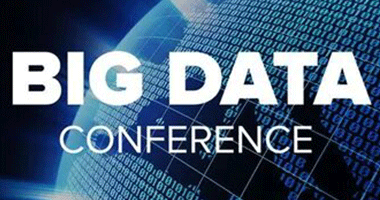The Rise of the Smart Robots in the Financial Services Industry

Fabien Legland,
Director, Crédit Agricole CIB.
The Office of the Controller of the Currency (OCC) published its semi-annual risk perspective and highlight on Artificial Intelligence and listed it as one of the 3 main sources of innovation for being more efficient, reduce costs and improve customer experiences (the other two being cloud computing and digitalization of existing process and products). Let’s talk about it!
Time to demystify Artificial Intelligence
Artificial Intelligence has been around for decades, however, the increased amount of use cases for industry are growing as never before.
In his autobiography “Hit Refresh”, Satya Nadella could not have explained it better: “Artificial Intelligence is the result of 3 factors: big data, massive computing power, and sophisticated algorithms. Artificial Intelligence will bring value by being bespoke and democratized.”
While the first 2 factors are simple to understand, it is worth spending a few words to define the last one. Sophisticated algorithms can also be referred to as Machine Learning, which Wikipedia defines as “the study of algorithms and statistical models that computer systems use to progressively improve their performance on a specific task.”
Once this is well understood, the myth of Artificial Intelligence as a “black box” is over, as Machine Learning algorithms can be understood as transparent, well-defined, crystal clear and pattern-recognition functions. Marcos Lopez de Prado wrote an entire book, “Advances in Financial Machine Learning”, to explain this and define how to build those algorithms step by step.
Of course, developing an algorithm of Machine Learning is complex and overwhelming. It requires an intimate familiarity with data curation and processing, high performance computing infrastructure design, software development, feature analysis, execution simulators or back testing… Each of those steps require specific skills and requires a significant amount of collaboration.
Application of Artificial Intelligence
There are many use-cases, too many to list all of them. As long as you need complex algorithms to identify patterns in a large data pool, you can be pretty sure Machine Learning can help you.
One of the challenges many Financial Institutions face is sorting through the massive amount of data generated by various critical compliance and security monitoring functions. In such a highly regulated industry, they must focus on anti-money laundering schemes, international sanctions and/or cyber-crime. For all those functions, you essentially need to start by identifying (and ignoring) the false positives to focus human efforts by dealing with the true hits.
Deloitte recently published its 3rd Banking Fraud survey and identified fraudulent documentation, cybercrime, overvaluation/non-existence of collateral and siphoning/diversion of funds as key frauds. None of these risks are new for banks. They simply highlight the ineffectiveness of the existing controls and tools. The survey participants believe Financial Services companies should develop more tools or intelligence gathering. Artificial Intelligence will give us the hedge.
A couple of other examples worth mentioning:
• Modelling Corporate Credit risks: Machine Learning algorithms can be leveraged to better model corporate credit risks in lieu of using traditional statistical models.
• Identifying Early Warning Signs: Machine Learning algorithms can look at traditional financial data (e.g. fundamental, analytics) and alternative data (e.g. satellite images, google searches, social media) to anticipate the degradation of a counterparty credit rating before it happens.
• Anticipating Critical Systems Downtime: Machine Learning algorithms can go through logs generated by your infrastructure, to identify correlation between specific events and systems downtime, and to anticipate future unavailability of your critical systems ultimately.
Examples of applications also applicable to other industries
In its article of December 6th, 2018, the NY Times was stressing the impact of Machine Learning for recruiting. Startups have developed algorithms to identify candidates that do not meet traditional criteria (e.g. job titles, key words).
The principle is simple: “you are really looking for people who have not done it, but can do it”. This will ease the search of candidates for hard-to-fill roles. The downside for job seekers is that such algorithms may also lower wages in these fields as “you get the more non-traditional equally qualified, equally high performing people”.
Traditional search for candidates can be easily gamed by applicants including keywords in their resumes that machines are likely to seek. Conversely, poorly worded job listings could cause computers to overlook qualified candidates.
Some practical examples are based on the assumptions that chess players tend to be good at coding, basketball players at sales, or that 90% of software engineers at the financial software company Intuit know programming language Java…
Onboarding of Artificial Intelligence tools or services in the Banking Industry
There is a significant chance that you cannot develop Artificial Intelligence tools without the help of third-party vendor. However, there is a large amount of risk mitigation required to ensure your critical infrastructure or confidential data are secure.
In a recent speech at a conference focusing on FinTech, Federal Reserve Board Governor Brainard said banks should consider regulatory guidance on vendor risk management and technology service providers when outsourcing artificial intelligence-based tools or services.
She noted that “the vast majority of the banks” supervised by the Federal Reserve have to rely on the expertise, data and off-the-shelf AI tools of nonbank vendors. Since vendor risk-management guidance discusses best practices for due diligence, selection, and contracting processes in selecting an outside vendor, the guidance seems fitting for these AI and technology tools as well.
Competing with the machine?
As you may have noticed from my focus on skill development within my previous innovation-related articles, I believe it is important to stay relevant in today’s fast-paced work environment. “The Second Machine Age” from Andrew McAfee has been a great reference that provide additional color to my recommendations.
While not necessarily relevant for the Financial Services industry, it is important to remind the Moravec's paradox: “Contrary to traditional assumptions, high-level reasoning requires very little computation, but low-level sensorimotor skills require enormous computational resources”. In other words, many manual jobs should be immune to the broad impact of Artificial Intelligence for the foreseeable future.
Coming back to the Financial Services industry, the key resides in the fundamental assumption that people and computer will not approach the same task the same way, as we have never seen a truly creative machine. Ideation, or coming up with new ideas or concepts, is and will remain the strength of human being.
Roland Berger, a leading consulting firm, provides Artificial Intelligence courses for their entire workforce, to ensure they are equipped to understand data as users, not as developers. Roland Berger strives to educate all their consultants to be able to process and analyze large amount of data.
Leading colleges are now proposing Artificial Intelligence full-time or part-time Masters of Science. There are many excellent MOOCs to leverage on Internet. And who knows… your Human Resources department might have corporate sponsored Machine Learning condensed classes available, like we would like to implement at Credit Agricole CIB.
Subscribe to ICONICEXPRESS Mag
News
A look at the history of public media in the U.S. as Republicans target federal funding
Pilot and 2 young daughters survive the night on airplane wing after crashing into icy Alaska lake
Columbia Planned Tighter Protest Rules Even Before Trump Demanded Them
US House Speaker Johnson says Congress can 'eliminate' district courts
Texas lawmaker Jasmine Crockett defends 'hot wheels' comment about Gov. Greg Abbott
Vance to join wife for Greenland trip on Friday, suggests global security at stake
Columbia student protester can’t be detained for now as she fights deportation, judge rules
Tesla Stock Rises for 5th Straight Session—Watch These Key Price Levels
Kroger countersues rival Albertsons after demise of $25 billion merger
The Best Deals From Amazon’s Big Spring Sale (and Across the Internet) This Week
Asia markets trade mostly higher after Wall Street extends gains on hopes of softer Trump tariffs














